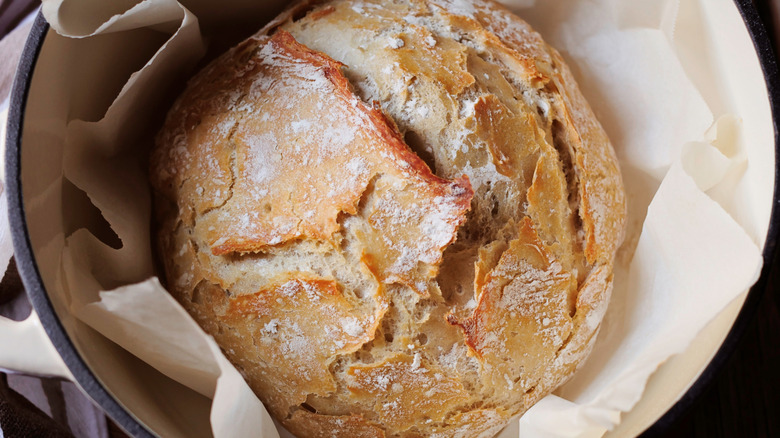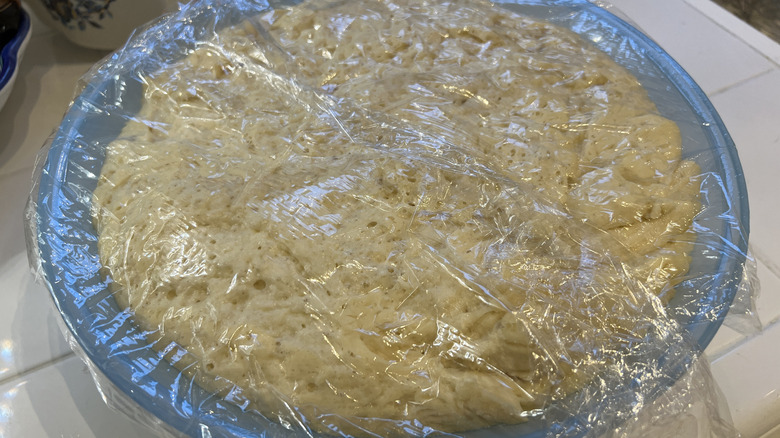The Secret To Perfect No-Knead Bread Is This Key Ratio
Bread baking seems difficult, but it can be relatively easy. One way to do so is to pick a beginner-friendly bread type, especially a recipe that doesn't involve kneading. Usually bread dough needs to be kneaded in order to develop gluten, but certain recipes allow you to skip this step. We're not just talking about quick breads such as banana, corn, or pumpkin; nor flatbreads like lavash, naan, or pita; and you can also make baguettesand pain de mie without any kneading. Page Pressley, a restaurateur who co-owns The Newstand in San Antonio, Texas, says the secret to success with no-knead breads (other than the quick and flat kind) is to use a high proportion of water to flour. As he told The Takeout, "We prefer 100% hydration for this method, so 1:1."
These proportions don't change, no matter what type of flour you use. Pressley prefers 22% fresh-milled grains in his bread flour, something also favored by other artisan bakers, but said, "It doesn't change our ratio. It does mean it's best as a 48-hour ferment."
No-knead bread can be time consuming
So it takes two days for a no-knead bread to rise? Actually, it takes a little bit longer. According to Page Pressley, "You should leave a two-day bulk cold ferment, which is best. After a three to four [hour] bulk ferment at room temperature, leave a three to four hour proof depending on the temperature of your room." The reason why it takes so long to rise — as opposed to bread dough that gets kneaded — is that eventually, if the flour-water mixture is left on its own, flour enzymes start to break down the proteins. This, combined with the action of the yeast, transforms the ingredients into a soft, workable dough. The one thing you must not do, however, is try to speed things up by kneading your dough in-progress. If you succumb to the temptation, Pressley warned, "You will ruin the structure you have built if you knead it. Time [and] slow fermentation is what builds the structure."
Pressley offered a few more baking tips for the perfect no-knead loaf. For one thing, he recommended using a mixing container large enough to allow for expansion. He also suggested that the water be at body temperature — or around 99 degrees Fahrenheit. Most importantly, though, he reiterated that patience is key, and urged, "Be gentle and give it enough time to double in size before you bake it."

